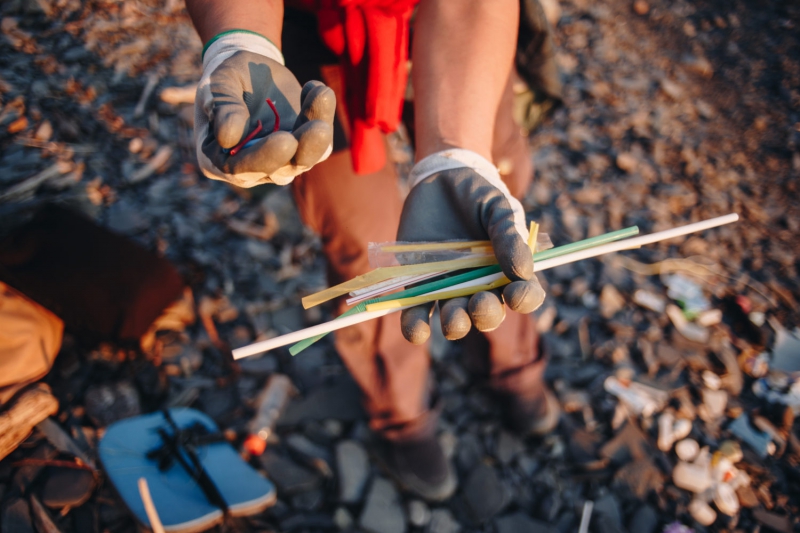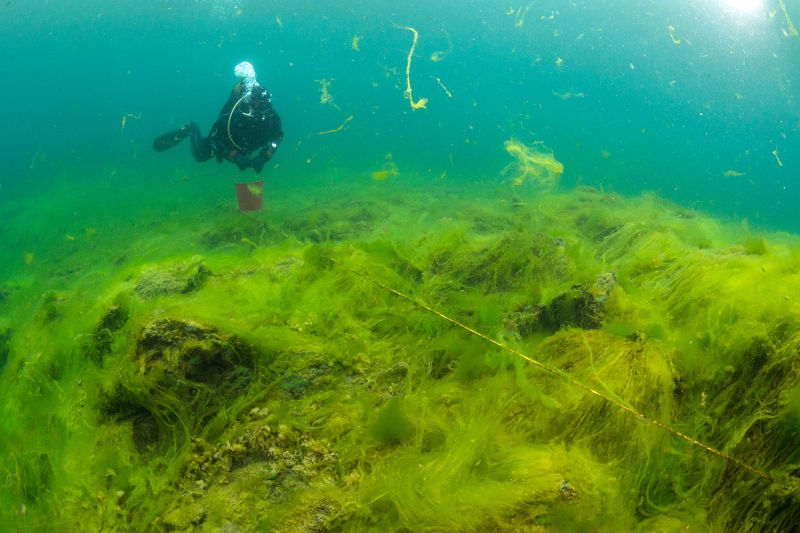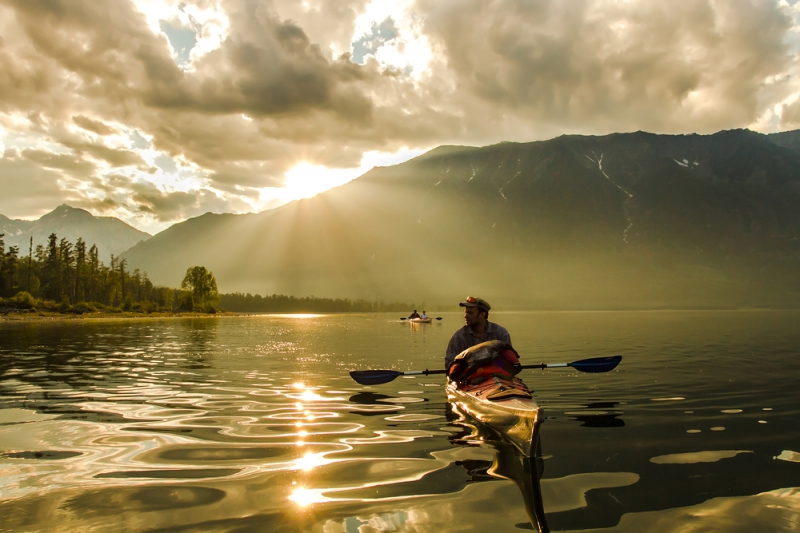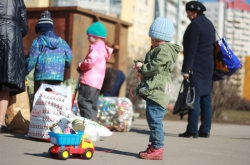Greenpeace and Baikal
The Baikal program began in 1995, when Greenpeace and the Russian Ministry of Environment launched the initiative to include the lake un UNESCO’s lost of World Heritage Sites. In 1996, an area of nearly 9 million hectares large was declared a Natural Heritage Site.
Since then, the members of Greenpeace and volunteers have achieved many successes. In 2006, massive protests in Russia and abroad resulted in the cancellation of Transneft company’s plan to build an oil pipeline in the vicinity of the lake. Activists had also prevented the addition of environmentally-threatening amendments to the law; in 2007, they were able to stop the issuing of permits for the hunting of Baikal seals.
2019: the fight against single-use plastic
Today, Lake Baikal suffers from contamination by plastic, but no precise data on the volume and make-up of pollution is available. Each year, activists take part in clean-up efforts along the lake’s coast, and researchers have previously discovered microplastic in the water. Today, plastic pollution is threatening the animal and plant life of the region.

In July 2019, it was announced that a group from the Russian branch of Greenpeace will undertake an expedition to Baikal in order to determine the most common types of plastic found on the coast of the lake. The group is made up of members of the organization’s Zero Waste project. Their goal is to collect garbage in several areas, separate the plastics, sort them by type, and weigh each fragment.
The team aims to identify the top-10 plastics contaminating Baikal and share the list with government authorities and ministries. According to the news portal Takie Dela, this list may be used as the basis for a list of single-use items to be made illegal in Russia. Greenpeace will also welcome the assistance of volunteers interested in conducting assessments of plastic pollution levels in nearby bodies of water. Earlier this year, Greenpeace carried out a similar study along the coasts of the Black and Azov seas, discovering 13,000 plastic fragments with a total weight of nearly half a ton.
In 2019, the attention of the public was brought to the construction of a bottling plant near the village of Kultuk in Irkutsk Oblast. The construction began in January 2019 and, according to Irkutsk Oblast’s deputy minister for environmental development, the project has been in development since 2013. The plant is expected to launch in 2021.

Who’s polluting Baikal?
Environmentalists today point to several key threats for the lake: the deforestation of its drainage basin, forest fires (each year, 1.5 million hectares of taiga land are destroyed by fires), poaching, unrestricted mass tourism, the dumping of ballast water from ships, and the pollution by oil products (160 tons of oil products are dumped into the lake by ships annually).
The pollution of Baikal’s waters is the biggest issue; for many years, the Baikal Pulp and Paper Mill was the biggest source of pollution. The damage it has done to the lake’s ecosystem is incomparable to any of the other contributing factors. The plant was built on the coast in 1966 to produce cellulose for the military-industrial complex. By the time construction was completed, however, the mill already became redundant due to the introduction of new synthetic materials.

According to experts, the installation of a recirculating water irrigation system at the plant in 2008 finally put a stop to the direct dumping of toxic waste into the lake. The factory, however, became financially unprofitable and its owner company declared that it would close unless given permission to dump waste into the water. On January 13, 2010, then-Prime Minister Vladimir Putin signed a decree allowing the dumping of waste into Baikal. The plant finally closed in 2013.
Scientific opinion
In June of 2019, head of the Limnological Institute of the SB RAS Andrei Fedotov declared that the water in Baikal has become undrinkable. According to the scientist, the rising levels of toxins in Baikal water will soon make it non-compliant with sanitary norms. The increase in toxicity is linked to the threshold concentration levels of bacteria that produce the toxins.
According to Fedotov, nearly all of Baikal’s shallow areas have been infested with the Spirogyra algae, leading to changes in the ecosystem (such as the disappearance of the endemic Baikal sponge). The species has existed in the lake before, but in smaller amounts; now, there are areas where the algae bloom throughout the year.

Another critical factor in the changes are forest fires: the smoke affects the water system by infusing it with large amounts of ammonia.
Foreign researchers, too, are trying to bring attention to these issues. In April of this year, the official website of the Limnological Institute of the SB RAS published letters from international scientists calling for the protection of the lake. Experts from universities of the USA and Japan expressed their concern with the new wastewater treatment regulations proposed by the Russian Ministry of Natural Resources and Environment.
The Ministry of Environment decree No. 63 from 2010 establishes strict norms for the treatment of wastewater before its dumping in Baikal. According to local authorities, those norms are unrealistic. The modern facilities required to comply with those norms are expensive to build and maintain and may result in a manifold tax rate increase for the local population. For that reason, the Ministry of Natural Resources is considering the mitigation of those regulations. The proposed changes, however, resulted in backlash from the scientific community. According to scientists, the allowed volume of various pollutant types will grow by 3.5 to 38 times and lead to irreversible consequences.

“The proposed changes are especially worrying given the recent environmental degradation occurring in the nearshore zone of Lake Baikal. These well-documented changes include unprecedented growth of nuisance and harmful algae, mass mortality of endemic species and bacterial pollution. Decades of research have irrefutably shown that these types of changes are directly linked to the loading of anthropogenic pollution, including phosphorus, nitrogen and other substances the concentrations of which will increase in Lake Baikal if the proposed changes become law,” note the staff members of the University of Minnesota’s Large Lakes Observatory in their open letter.
An open letter from the Japanese Society of Limnology says that the law would allow manufacturers and hotels to drastically increase the concentration levels of different pollutants in sewage water being dumped into Baikal. The scientists, however, hope that the Russian Government, with the help of scientists, manages to develop an appropriate program of action in order to preserve Lake Baikal as a model case of effective environmental conservation.
Environmental scientists are also outraged by the fact that the proposed changes to the regulations were not discussed with a wide number of experts. According to Eugene Simonov, a coordinator for Rivers Without Boundaries and environmental scientist, a majority of the changes will result in a manifold increase of the anthropogenic impact on Baikal, and the changes themselves are purely economic, not environmental, in nature; their goal is to benefit the owners of industrial and tourist facilities, reports the REGNUM news agency.





